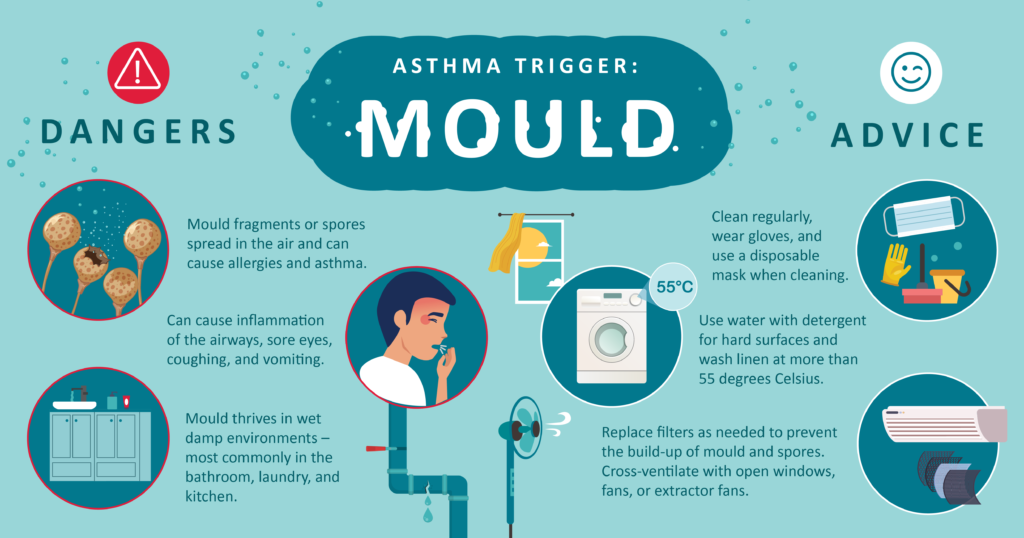
Mold and asthma are closely related health concerns that can have a significant impact on individuals’ well-being. In this Mold Solutions Guide article, we will explore the connection between mold exposure and asthma symptoms, as well as provide effective solutions to minimize risks and improve indoor air quality.
Reducing Mold Exposure: A Crucial Step in Managing Asthma Symptoms
Reducing Mold Exposure: A Crucial Step in Managing Asthma Symptoms can significantly improve the quality of life for asthma sufferers. Mold can exacerbate asthma symptoms and trigger asthma attacks. It is essential to take proactive measures to minimize mold exposure in indoor environments. Using HEPA air purifiers and dehumidifiers, fixing leaks promptly, and ensuring proper ventilation are key strategies for reducing mold growth. Regularly cleaning and inspecting areas prone to mold, such as bathrooms and basements, can also help prevent mold-related health issues. By prioritizing mold prevention and control measures, individuals with asthma can better manage their symptoms and enjoy a healthier living environment.
Frequently Asked Questions
What is the relationship between mold exposure and asthma symptoms?
Mold exposure can exacerbate asthma symptoms in individuals who are sensitive to mold spores.
How can mold growth in indoor environments affect individuals with asthma?
Mold growth in indoor environments can worsen asthma symptoms and trigger asthma attacks in individuals with asthma. The presence of mold spores can cause inflammation in the airways, leading to coughing, wheezing, shortness of breath, and other respiratory issues. It is important to address mold problems promptly to protect the health of individuals with asthma.
Are there specific strategies recommended in the Mold Solutions Guide to reduce mold-related asthma triggers?
Yes, the Mold Solutions Guide recommends strategies such as proper ventilation, keeping indoor humidity levels low, and regularly cleaning and maintaining HVAC systems to reduce mold-related asthma triggers.
Conclusion: Understanding the relationship between mold and asthma is crucial for individuals looking to improve their respiratory health. By implementing effective mold solutions and taking proactive measures to reduce indoor humidity levels, asthma sufferers can significantly lower their risk of exacerbations and experience better overall well-being. Remember, prevention is key in managing asthma symptoms in mold-prone environments. Stay informed, keep surfaces dry, and seek professional assistance if needed to ensure a safe and healthy living space.
![]()